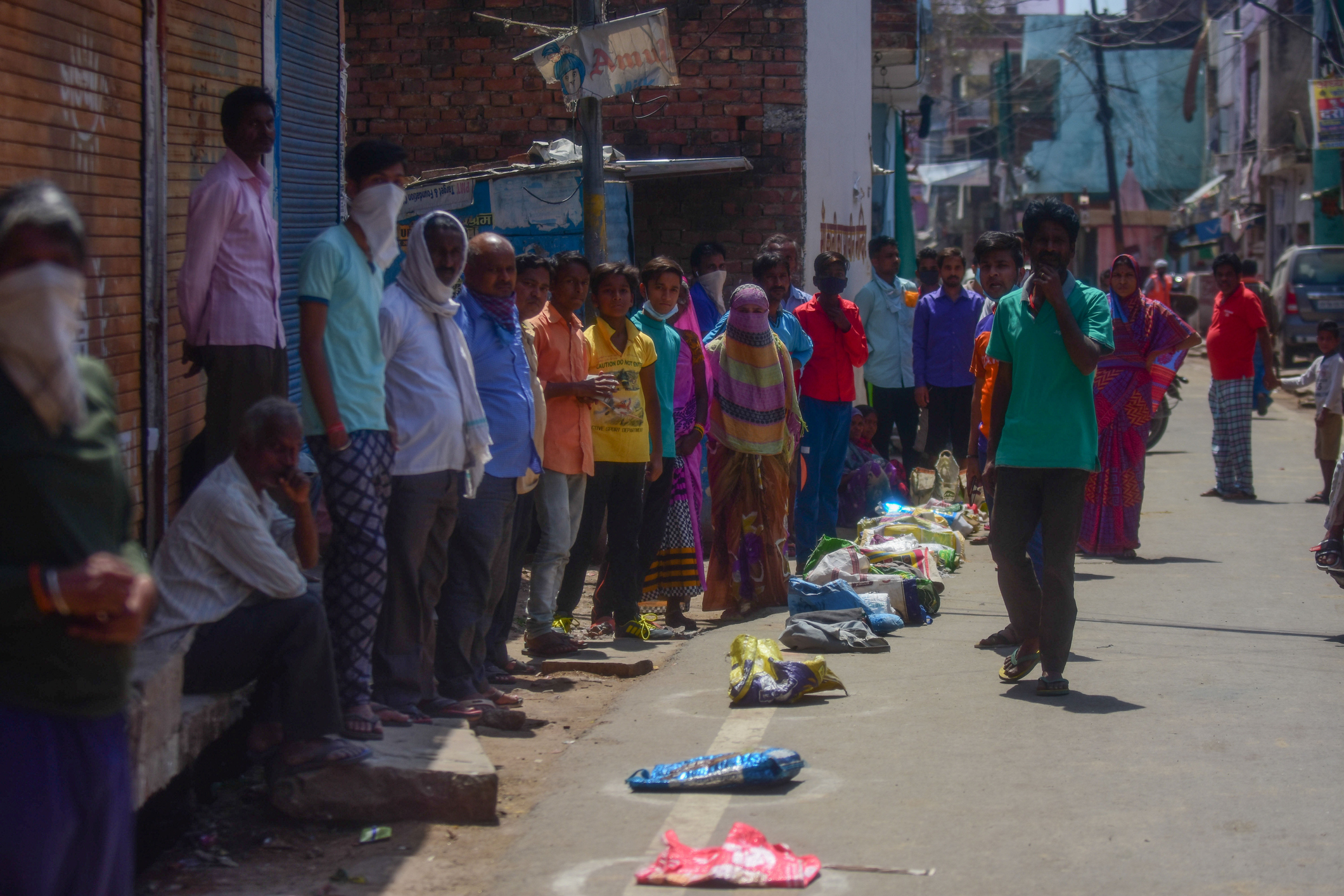Following in the footsteps of other nations, India went into a 21-day lock down on 24 March. This unprecedented situation was to reveal the poor capacities of the Indian state like never before. What really caught the world’s attention were the heartrending images of migrants walking away from large cities, along highways, in a desperate bid to get back home.
Migrants, especially those who spend short periods of time in the city and remain intrinsically linked with their rural places of origin, remain curiously invisible to the state. They are severely undercounted in official datasets like the census, despite being prominent in India’s workforce fuelling critical industries like construction and manufacturing. The walking migrants – and those trapped inside the city who made SOS calls for food – demonstrated agency even amidst their desperation as India unleashed the draconian Disaster Management Act and used police powers to enforce the lock down. The emergence of previously unseen migrants in large numbers has shone a light on mobility questions that the state has shied away from; and the lock down, a period of forced immobility, has ironically become a fertile moment for thinking about how mobility might be governed better.
In this piece, I want to think through some of the opportunities for governance of mobility that the COVID-induced lock down presents to a country like India, where informality of work and housing ensure a perpetual tension between formal governance structures and the political economy.
Tweaking an exclusionary social welfare system
Short-term migrants consistently fall through the cracks of India’s social welfare system. The majority are casual and contractual workers and cannot access social security through their employers. And despite Constitutional freedom to move within the country, internal migrants face a situation not unlike China’s hukou when it comes to accessing social welfare. Direct benefits like subsidized housing, and food via the public distribution system (PDS), are not portable across locations, i.e. migrants can access them only where they can prove citizenship via documents like ration cards and voter IDs, which they typically do not possess at destination.
Responding to the large-scale crisis of hunger, state governments – which administer social welfare – have found ways to universalise PDS, albeit temporarily, and mobilised stadia and community centres to house migrants, whose usual places of residence – construction sites, shop floors – were shuttered.
To me, these responses reveal possibilities that haven’t yet been explored and call for institutionalising successful initiatives like door-to-door distribution of rations, food kitchens and shelters, as well as improving inter-state coordination and redistributing allocations from the central government as we move forward.
Realising the potential of decentralised governance
That individual States took the lead isn’t surprising given that they carry the weight of governance under India’s federal system. However, while they have usually tended to centralise power, in this instance, district governments, municipalities and village councils – despite limited capabilities – were equally engaged in firefighting on the ground, whether sustaining migrants in the city or isolating return migrants in villages of origin. Local government capacity has been a documented factor in China’s success in containing spread. The COVID crisis has highlighted that, in India too, governing mobility requires a highly local response.
Activating hyperlocal responses via embedded civil society
Shocked by the scale, spatiality and diversity of migrant populations, local governments have turned to civil society actors who are deeply embedded in communities of the urban poor. In the city where I live – Gurgaon, a city of a million, across the border from Delhi – the lockdown revealed many new facts about migrants to the administration: that they live not only in inner city dense informal settlements but also in the urban periphery, along interstate highways and inside forest areas, and that needs varied across migrant groups. While domestic workers could rely on wages advanced by employers, daily wage workers lived hand to mouth, and faced food shortages early in the lock down. Only the knowledge embedded in unions, NGOs, activists and community leaders enabled a calibrated response to such variations.
Migration governance could thus be much improved by robust partnerships between government and civil society. These could also help organise informal markets. For instance, migrants do not have rent contracts with landlords; hence ensuring tenure security, housing affordability and quality services has been a challenge. Institutional arrangements where civil society mediates the landlord-tenant-state tripartite relationship are a possible way forward.
Crises offer unexpected lessons. As a migration scholar studying India, I have been disappointed that the hardships for migrants were not anticipated prior to announcing a lock down. Equally, I have been pleasantly surprised at the agility and humanity with which states and local governments have stepped in. This crisis may yet be a crucible in which a promising bottom-up and place-based approach to managing mobility is born.
About the author: Mukta Naik is an architect and urban planner, and Fellow at the Centre for Policy Research, New Delhi, India.
